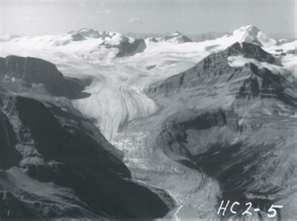IMPACTS ON WATER SUPPLY
(A
Canadian Perspective)
As flow patterns and water
levels respond to the changing climate, our water supplies will be
affected. Diminishing surface-water and
ground-water supplies, coupled with increasing demands for these resources,
would challenge all aspects of water resource management.
Quantity of Freshwater
It is difficult to predict future changes in the
availability of freshwater. While there is confidence that warmer temperatures
will affect variables such as evaporation and snow cover, uncertainties
concerning the nature of regional changes in precipitation patterns, as well as
the complexity of natural ecosystems, limit our ability to project hydrological changes at the watershed scale. However, it is reasonable to
generalize that, for many regions of Canada, climate change will likely
result in decreased summer flows, warmer summer water temperatures and higher
winter flows. This is particularly true for the snowmelt-dominated systems that
are found across most of the country.
Some of the most vulnerable regions of Canada with
respect to the impact of climate change on water resources are those that are
already under stress, with demand approaching or exceeding supply. This is most
apparent in the driest regions of the southern Prairies, commonly referred to
as the Palliser Triangle, where drought and severe annual soil moisture
deficits are recurrent problems. Even Ontario,
perceived to be an especially water-rich province, suffers from frequent
freshwater shortages, and more than 17% of British Columbia’s surface-water resources
are at or near their supply capacity for extractive uses.
For much of western Canada, snowmelt and glacier runoff
from mountainous areas are primary sources of water supply for downstream
regions. With warmer conditions, the seasonal and long-term storage capacity of
alpine areas may decrease, due to thinner snowpacks, more rapid spring runoff,
and decreased snow and ice coverage. This, in turn, would result in lower summer river flows and therefore
greater water shortages during the period of peak demand. Recent trends
observed on the eastern slopes of the Canadian Rocky Mountains suggest that the
impacts of diminishing glacier cover on downstream flows are already being felt
(see
Box 1). Across southern Canada, annual
mean streamflow has decreased significantly over the last 30–50 years, with the
greatest decrease observed during August and September. Continued decreases are projected to occur as
a result of climate change.
|
BOX 1: Diminishing flows in Prairie
rivers
Glacial meltwater is a key
source of water for rivers in western and northern Canada. Along the eastern slopes of the Canadian
Rocky Mountains, glacier cover has decreased rapidly in recent years, and
total cover is now approaching the lowest experienced in the past 10 000
years. As the glacial cover has
decreased, so have the downstream flow volumes.
This finding appears to
contradict projections of the Intergovernmental Panel on Climate Change that
warmer temperatures will cause glacial contributions to downstream flow
regimes to increase in the short term.
However, historical stream flow data indicate that this increased flow
phase has already passed, and that the basins have entered a potentially
long-term trend of declining flows.
The continuation of this trend would exacerbate water shortages that
are already apparent across many areas of Alberta
and Saskatchewan
owing to drought.
Peyto
Glacier
|
The Great Lakes basin is
another region where there are significant concerns over the impact of climate
change on water resources. More than 40 million people live within the basin,
most of whom depend on the lakes for their water supply. Many studies have suggested that climate
change will result in lower water levels for the Great
Lakes, with consequences for municipal water supplies, navigation,
hydroelectric power generation, recreation and natural ecosystems.
Although summer stream flows are generally expected to
decline, many researchers project a corresponding increase in winter flows.
This is because warmer winters would increase the frequency of mid-winter thaws
and rain-on-snow events, a trend that is already evident on the upper Saint John River. This, in turn, would increase the risk
of winter flooding in many regions as a result of high flows and severe ice
jams. For example, on the Grand River of southern Ontario, researchers project that warmer
temperatures and increased precipitation will extend the risk of severe
flooding to the months of January and February. However, since snow
accumulation will likely be reduced by frequent, small melt events throughout
the winter, the magnitude of spring flooding will likely decline. Similar
patterns are anticipated for snowmelt-dominated rivers across much of southern Canada.
Climate change affects not only the quantity of surface
water but also that of groundwater. Every region of Canada is reliant, to some degree,
on groundwater. For example, the entire population of Prince Edward Island relies on groundwater
for potable water, while approximately 90% of the rural population
in Ontario, Manitoba
and Saskatchewan
depend on groundwater resources. Despite groundwater’s importance, recharge
rates for groundwater across the country are virtually unknown, groundwater
dynamics are poorly understood, and research on the impacts of climate change
remains limited.
The depth and nature of groundwater affects its sensitivity
to climate change. In general, shallow unconfined aquifers will be impacted
most significantly. This is clearly
demonstrated by historic variability, in which shallow wells in many parts of Canada run dry
during drought periods. In many regions, unfortunately, these shallow aquifers
also contain the highest quality groundwater and are a critical source of
potable water and water for livestock. Although
deeper aquifers are less sensitive to the direct impacts of climate change, the
failure of shallow aquifers could encourage their exploitation.
These deep aquifers can take decades to recover from
pumping, due to slow recharge rates.
Local factors, such as the permeability of the material (e.g.,
soil, rock) above the aquifer, and the timing of precipitation, strongly affect
the rate of groundwater recharge and therefore sensitivity to climate change. An increase in winter precipitation is
expected to benefit groundwater levels more than an increase in summer
precipitation. This is because snowmelt
tends to recharge groundwater, whereas summer precipitation is primarily lost through evapotranspiration.



